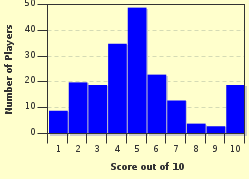Quiz Answer Key and Fun Facts
1. The National Health Service came into being on July 5th 1948. Which city was home to the first NHS hospital?
2. Who was the man responsible for the setting up of the NHS?
3. When the NHS was originally introduced, it was partly funded by every working person through their National Insurance payments.
4. In which year were NHS prescription charges introduced?
5. In 1962 a particular operation was performed in an NHS hospital for the first time. It was carried out to replace which part of the body.
6. The NHS is not just about making ill people better. It also helps people where corrective or invasive measures are not required. In 1978 one such procedure produced a particular result. Which treatment was it?
7. In 1953 Watson and Crick published their results into the structure of DNA, a discovery that was to have far reaching consequences for the NHS. In which year were they awarded the Nobel Prize for Medicine?
8. In the early 1990's the NHS in England and Wales underwent a radical change in its organisation. What system was introduced?
9. In the last few years of the 20th Century several initiatives were introduced into the NHS to make some services easier for the public to access. Which of the following was not one of the changes made in those years?
10. Within the NHS, what was the meaning of PCT?
Source: Author
romeomikegolf
This quiz was reviewed by FunTrivia editor
gtho4 before going online.
Any errors found in FunTrivia content are routinely corrected through our feedback system.

